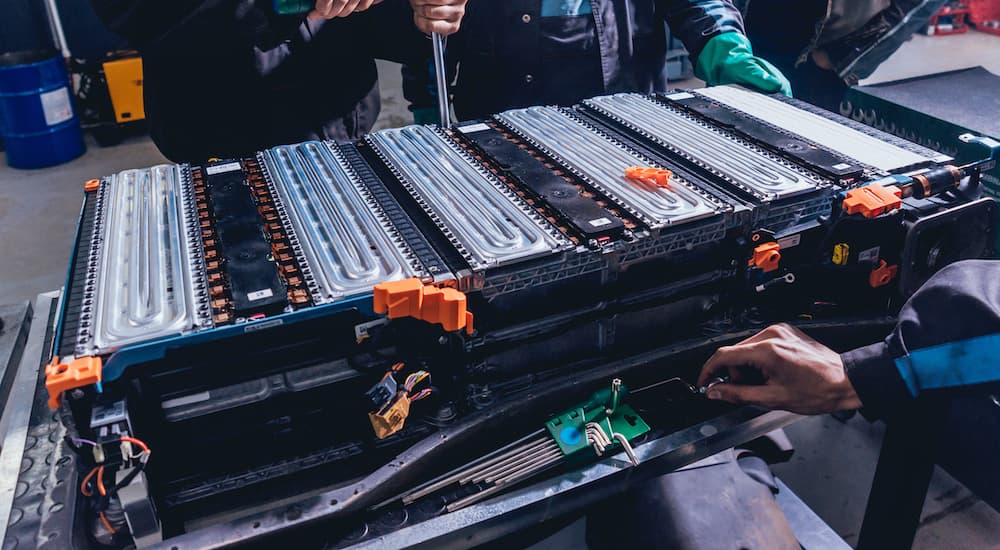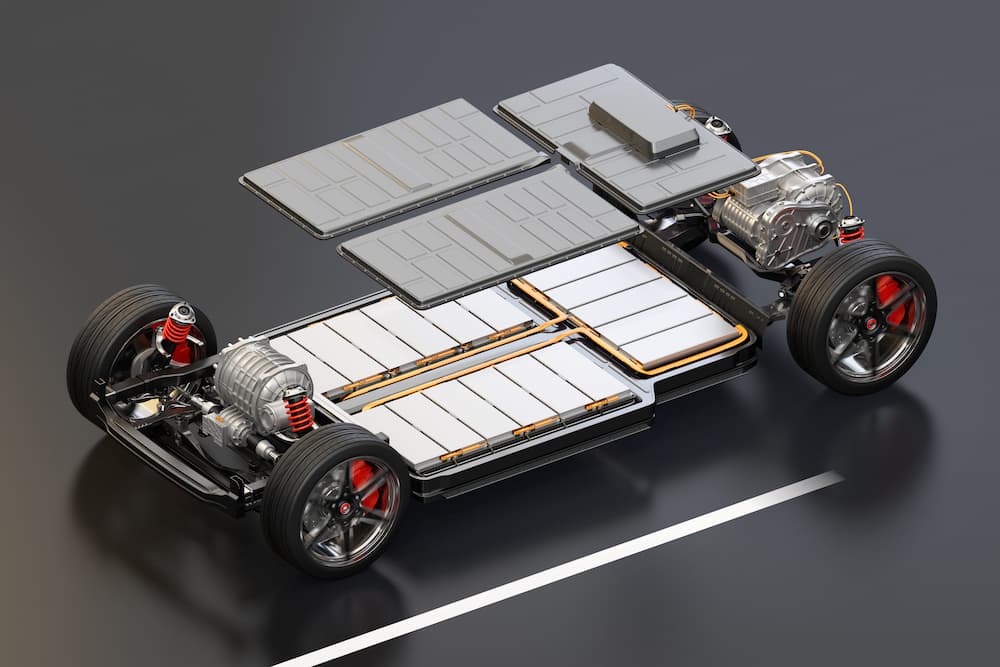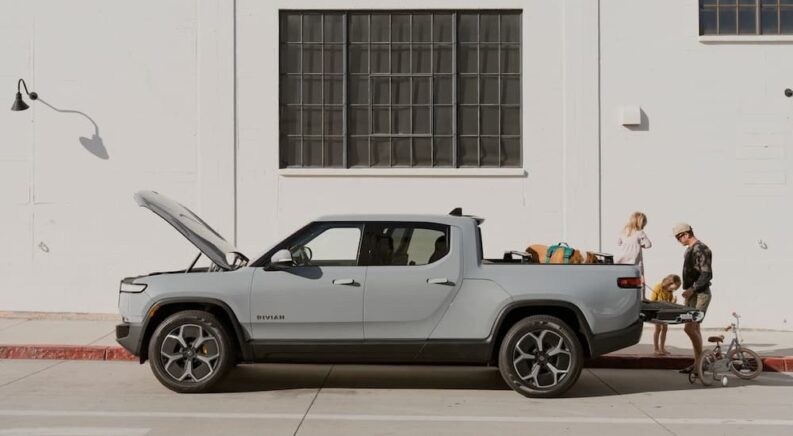It’s hard to understate how quickly all-electric vehicles are changing the auto industry. EVs aren’t just the most efficient and Earth-friendly vehicles on the road. They’re also setting a new bar for efficiency and utility. Just take Porsche’s all-electric Taycan Turbo GT, now one of the fastest cars on the road with a zero-to-60-mph time of 1.89 seconds. The Rivian R1T pickup proves how versatile an EV can be, boasting an 11,000-pound towing capacity while shooting from zero to 60 in just around three seconds.
While there’s probably never been a better time to explore the EV segment, there are a few drawbacks to the all-electric segment. The country’s EV charging infrastructure has come a long way but can still be a bit spotty in rural areas. EVs are more affordable than ever but still present a larger investment than your typical gas-powered vehicle. Then there’s the issue of repairs and maintenance. The high-voltage powertrains, specialized components, and EV-specific engineering can present a bit of an issue for those who like to take the DIY approach, which raises an interesting question. Can you work on an EV yourself, or must you go to the dealer? We’ll explore that issue as we pop the hood, realize there’s (usually) nothing there, and learn about some other ways modern EVs differ from gas-powered vehicles when it comes to repairs and maintenance.
High Voltage, High Stress
For the uninitiated, an EV powertrain might not seem that intimidating. After all, most drivers who have spent a little time under the hood have experienced a mild shock when jump-starting a vehicle or letting a wrench stray a little too close to the 12-volt battery. Many of these hazards can be avoided by simply disconnecting the battery, but that’s easier said than done when it comes to EVs. Unlike the simple 12-volt system in the average gas-powered vehicle, EVs rely on a high-voltage network that connects the battery pack to the charger, electric motor, and inverters. While these can be disconnected, that doesn’t mean it’s entirely safe or advisable to do so. An EV’s electrical system often operates around 400 volts while the batteries measure between 50 and 150 kWh. If you’re still a few credits shy of your electrical engineering degree, trust us when we say that’s a far cry from the average car battery.
If you know your way around a socket wrench, some simple EV repair and maintenance tasks should be well within your wheelhouse, but any job related to the high-voltage electrical system should be approached with careful consideration. This includes projects involving the battery pack, power inverter, on-board charger, motor control unit, battery cooling system, and high-voltage cable connections. Any components connected to the high-voltage electrical system will usually be clearly marked, but as always, your owner’s manual serves as a valuable resource whenever you’re in doubt.
We’re all about the DIY approach here at CheckEngine, and we sincerely believe there are few better ways to learn about a vehicle than performing your own repairs and maintenance. But that ethos goes right out of the window when high-voltage electricity gets involved. If you’ve never experienced the sort of zap that sends you into a herky-jerky dance and sets your life flashing before your eyes, just count yourself lucky and start searching for a qualified EV technician in your area. Finding the right person for the job was a little difficult in the early days of all-electric vehicles, but the industry has come a long way with more and more mechanics and dealerships offering EV-specific service.

If You DIY
If you decide to handle your own EV-related maintenance, there are a few important tips to keep in mind, as well as an arsenal of specialized equipment that you should have ready. First off, it’s important to perform any repair or maintenance-related tasks involving the high-voltage system in an area that’s clear of any obstacles, people, or other vehicles. Ensure the key fob is out of range to prevent any accidental ignition, and then locate and remove the service plug that disconnects the battery from the rest of the EV’s electrical system. Before diving in, give the system at least 10 minutes to dissipate any remaining charge, and then use a high-voltage multimeter to check the voltage. If you get a reading that’s within the zero to 10 volts range, you can get to work, but make sure you’re equipped with all the relevant safety equipment, including warning signs, a Class D fire extinguisher, insulated tools, and a battery jack if the project involves full removal. It’s also crucial to have a helper on hand armed with a rescue pole that can be used to safely separate you from the vehicle in case of accidental electrocution. If that sounds like a rather onerous way to save a few bucks, trust your instinct and make an appointment with your local EV-certified mechanic or dealership.
The Good News
While EV repairs and maintenance require a different approach and often call for a professional touch, there is some good news for those looking to save money. EVs are obviously more affordable in terms of fuel costs, but few realize that they’re also often cheaper to drive and maintain than their gas-powered counterparts. This largely comes down to the relative simplicity of EV design. While the powertrain in a typical ICE vehicle might require up to 2,000 individual parts, an EV can operate on as few as 20, with the electric motor, bearings, and reduction gears doing most of the work. This less-is-more approach isn’t limited to the powertrain. According to some sources, the average EV contains around 15,000 parts as opposed to 30,000 in a gas-powered car, truck, or SUV.
Fewer parts mean less likelihood of a costly repair, as well as lower maintenance costs, thanks to the fact that EVs don’t require regular oil changes or other engine-related maintenance tasks that tend to put a dent in a driver’s wallet. According to AAA’s Your Driving Costs analysis calculator, which factors in ownership costs, including tires, brakes, oil changes, and repairs, the ICE version of Hyundai’s Kona crossover would require a $4,428 investment over the course of 45,000 miles. Compare that to just $3,573 for the Kona EV, and it’s easy to see why an increasing number of budget-conscious drivers are turning to the all-electric market.
Another study provides an even rosier outlook in estimating that over the course of eight years, an EV might only cost two-thirds as much as a gas-powered vehicle. Those are some compelling stats, but they’re really not that surprising when you consider some of the unique properties of a modern EV. Aside from the cabin air filter, EVs don’t have any filters that regularly need to be replaced. They also get by with windshield washer fluid, brake fluid, coolant, and transmission fluid, which is a pretty short list compared to an ICE vehicle, which usually adds engine oil, power steering fluid, and engine coolant to the mix. An EV’s battery does require its own specific coolant, but these fluids are typically rated to last for a vehicle’s entire service life.

Some EVs, especially performance-focused models or trucks often used for towing, might need their tires swapped out a little more often than you’re used to due to torque-related wear and tear, but the project can easily be performed by a competent at-home mechanic. The costs will usually be offset by the brake pad and rotor replacement savings, as almost every EV on the market features some sort of regenerative braking system that drastically reduces brake wear while simultaneously topping off the battery. When activated, these regenerative braking systems basically throw an EV’s electric motors into reverse, providing enough resistance to turn the mechanical energy of a spinning tire into the electrical energy needed to charge the vehicle’s lithium-ion battery. By adopting new driving habits, drivers can double or even triple the service life of their brake pads and rotors and save some serious cash.
While many appreciate the close driver-vehicle connection that can only be forged by spending countless hours under the hood or exploring the underbody on a creeper, an EV’s high-voltage design means a more hands-off approach is usually the best course of action. Sure, you might spend a little more on labor costs, but these bills will largely be offset by the fact that EVs are much cheaper to own and operate than your typical gas-powered vehicle. If you have all the relevant training, a well-stocked toolbox, and understand the risks, nothing is stopping you from performing your own EV maintenance and repairs, but we’d strongly advise against messing with any high-voltage components that are three times more powerful than your average wall socket. EVs can provide a hair-raising experience when you’re behind the wheel, but the same sensation is a whole lot less enjoyable when it’s the result of 400 volts coursing through your body.

